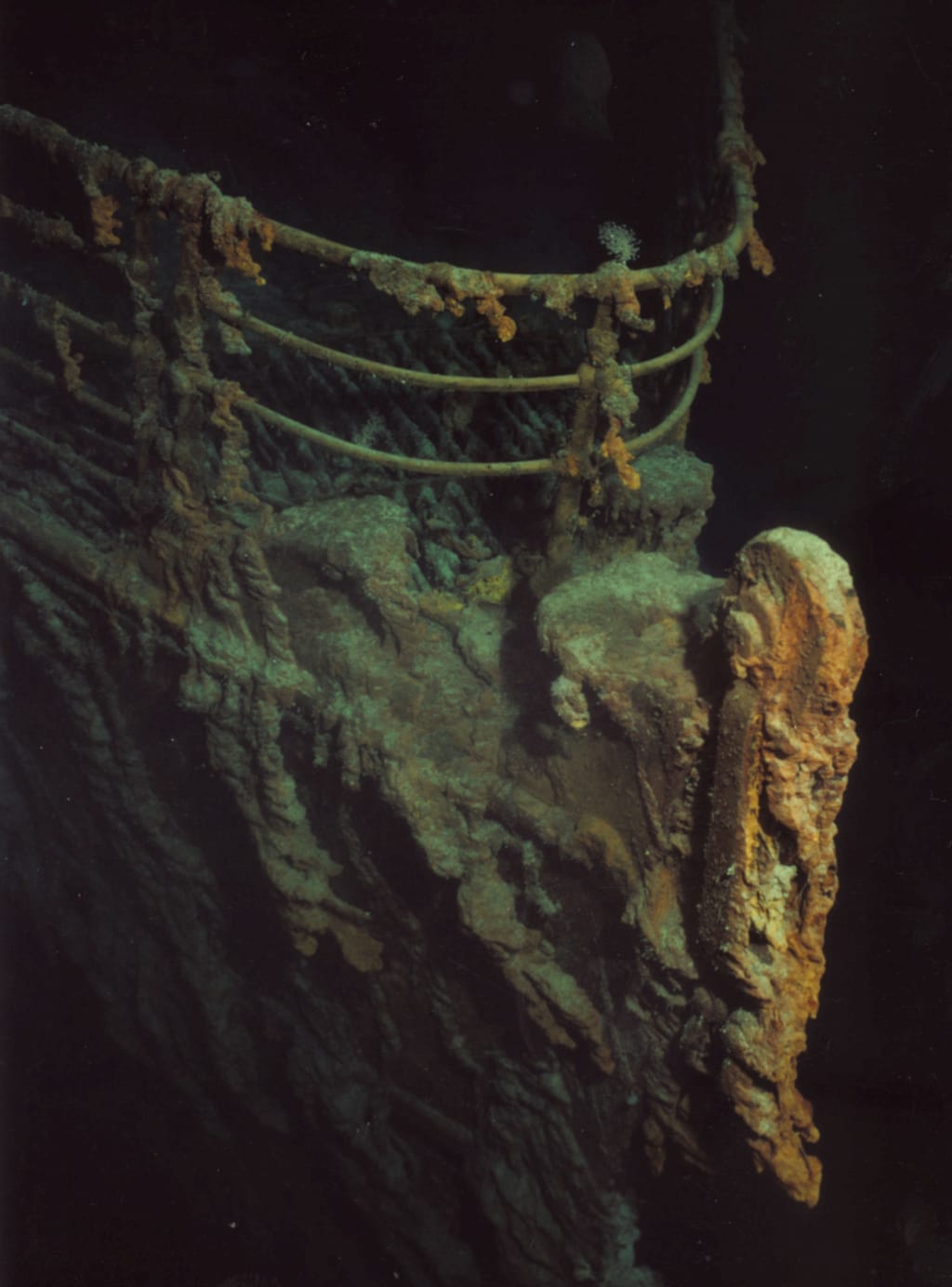Hidden Truths and Surprising Facts about The Titanic
THE TITANIC

Hidden Truths and Surprising Facts about The Titanic
• The Titanic crashed into a large iceberg in 1912, requiring a massive block of ice to lift it to the surface.
• The process involved wrapping the wreck in wire mesh and covering it with liquid nitrogen.
• The difficulty was in wrapping the ship completely, requiring lifting the ship slightly.
• Large tanks of liquid nitrogen were transported underwater, but the cold water of the Atlantic Ocean made the nitrogen sizzle and not create a block of ice around the mesh.
• A new attempt involved using huge magnets to raise the Titanic, but the operation was not successful due to the weight of the wreck and the colossal water pressure.
• A $5 million operation failed due to the strong water pressure and the failure of the nylon slings attached to the rack.
• A large piece of the Titanic weighing 21 tons was pulled up, but it broke due to the strong water pressure.
• A book and movie were written and made about the operation, but no one attempted it.
• The operation required several hundred large cylinders of compressed air, which float upwards when lower under water, complicating the operation.
Exploring the Titanic's Raising Plan
• Scientists propose extracting hydrogen and oxygen from ocean water to raise the Titanic.
• The extracted elements are then filled into containers attached to the ship, allowing the Titanic to rise to the surface.
• The process could cost billions of dollars and could result in the entire world ocean being left without vital oxygen.
• A potential solution involves lowering boxes of dynamite to the ocean floor, which must be sealed to prevent it from getting wet.
• A large hook that can lift the Titanic from the bottom is needed, but this requires a large cruiser and a submarine with mechanical arms.
• The use of hot wax to harden and float on the water surface is considered, but it is not an expensive material.
• The containers are placed inside the Titanic through a remote control, but the wax doesn't pour out as the colder the water gets.
• The containers float away to the surface, and once released, the wax solidifies in an instant, covering the Titanic from within.
William Thomas Dead's Short Story on the Titanic Sinking
• William Thomas Dead, a British sailor, wrote a short story about the Titanic sinking in the mid-Atlantic in 1886.
• The story, which was published 26 years before the sinking, focuses on a British sailor named Thomas who survived the sinking by jumping into the water and climbing into a lifeboat.
• The story sparked industry interest in adding extra lifeboats on ships, but received little attention.
• Thomas was a journalist who contributed to the use of illustrations in newspaper articles and introduced newspaper interviews.
• The One Piece Theory, the first version of the sinking, claims that the sinking happened without any breakups.
• The theory suggests that the ship collided with an iceberg at 2:15 a.m., reached an angle of 45°, and plunged into the ocean depths to 20 a.m., only about 3 minutes later, the RMS Titanic disappeared under the surface of the ocean.
The Titanic's Sinking Theories
• The Titanic, the world's largest ship and the largest ever built, was reportedly sinking in April 1912.
• Survivors claimed the ship broke in two during flooding, but no evidence was found.
• In 1985, Robert Ballard discovered the wreckage, confirming the first breakup theory.
• A new theory proposed that the ship broke in two during sinking, with the Keel breaking, the starboard list eases, and the hole continues to bow and crumble.
• The theory was criticized for having plot holes, as the Titanic couldn't have held together until it reached such a high angle.
• In 2006, naval architect Roger Long proposed the V Theory, which suggested the breakup began at a shallow angle, with the upper structure failing and cracking.
• This theory has been disproven many times, but Roger Long believed it due to the mangled upper decks in the bow section.
• The first theory, the one-piece theory, claimed that the sinking of the RMS Titanic happened without breakups.
• The theory was based on the fact that the ship collided with an iceberg at 2:15 a.m., reached an angle of 45°, and began its final plunge into the ocean at 20 a.m.
• However, this theory was challenged by survivors who claimed that the ship broke in two during the flood.
• In 1985, Robert Ballard found the wreckage of the Titanic, confirming that the ship broke in two during the sinking.
• This led to the development of a new theory, the V Theory, which suggested that the breakup began at a shallow angle, possibly as little as 11°.
• This theory was based on the VRE theory, which suggested that the Titanic could not have held together until it reached such a high angle.
• Roger Long, a naval architect, proposed the V Theory in 2006.
• This theory suggests that the breakup began at a shallow angle, with water pouring through the crack and bending the Titanic the other way.
Titanic's Breakdown and the Story of Milina Dean
• The Titanic sinking incident occurred on April 14, 1912, when the ship hit an iceberg.
• The passengers, including a 2-month-old girl named Milina Dean, were alone in lifeboats waiting for help.
• The lifeboats on board could only accommodate about 50% of the total passengers, many of whom were still half empty.
• Milina's father, who had moved to the United States for a better life, was the first to notice the panic and the crew warnings.
• Milina's mother and brother were among the first to escape, and they were taken to New York by the Carpathia.
• Milina grew up in Ashurst, England, and worked as a secretary and assistant in small businesses in Southampton.
• Despite her father's death, Milina never spoke about the Titanic incident.
PLEASE DO COMMENTS AND LIKE,
THANK YOU
About the Creator
Dhiraj Jain
Dhiraj is a cricketer with a dream of becoming an acclaimed author. Fueled by a lifelong love for storytelling,
"joined creative writing courses," "devoted weekends to crafting short stories," etc.






Comments (1)
Hey there, just wanna let you know that this needs to have the disclaimer added to the beginning or ending, stating that it was created with the help of AI 😊